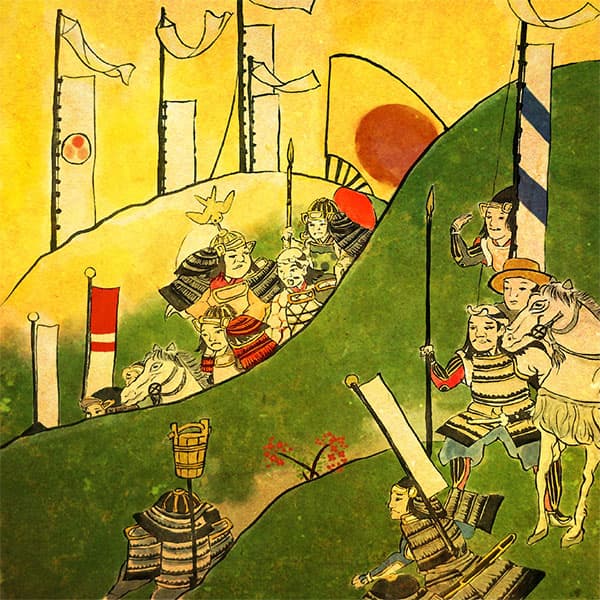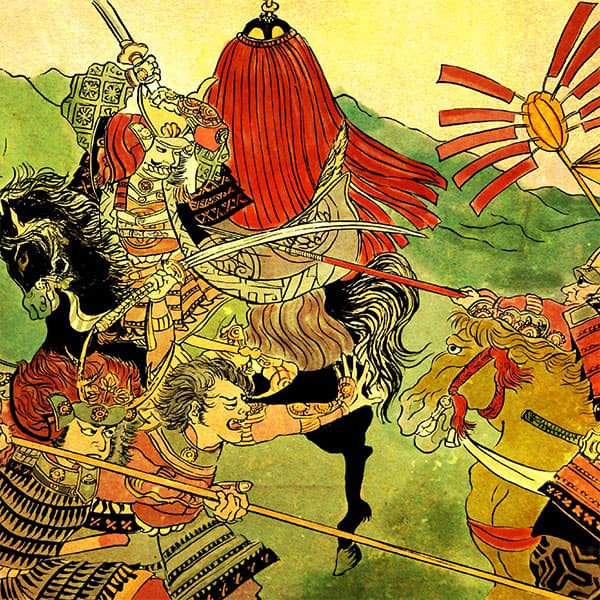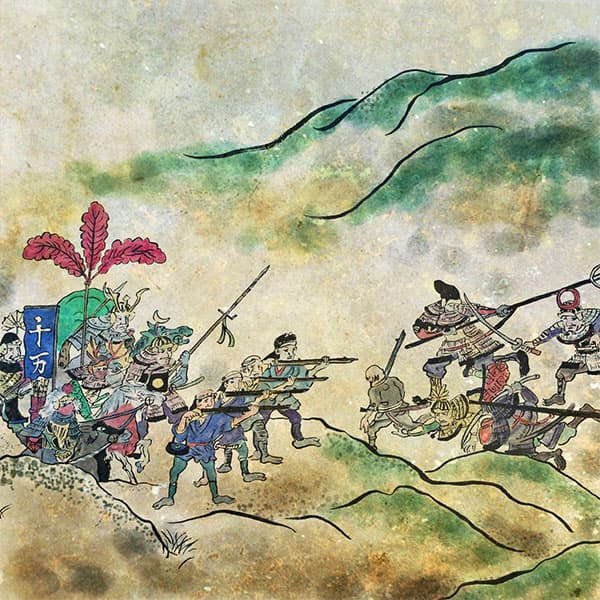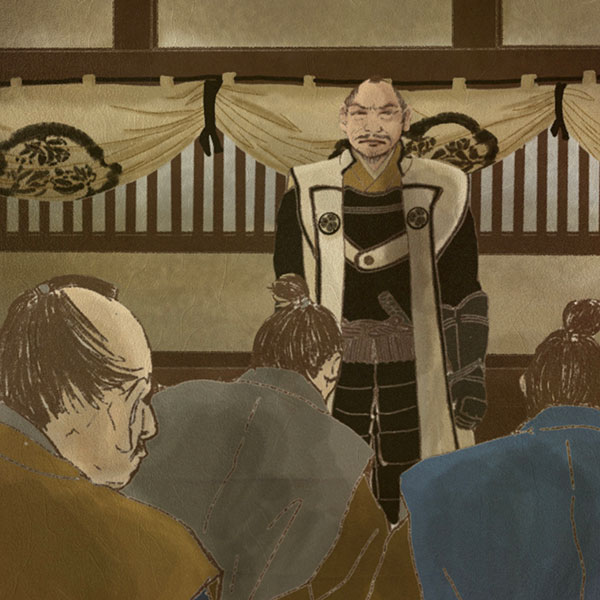Tadakatsu Honda (2/2)A military commander who has both flowers and fruits and is highly rated by everyone.
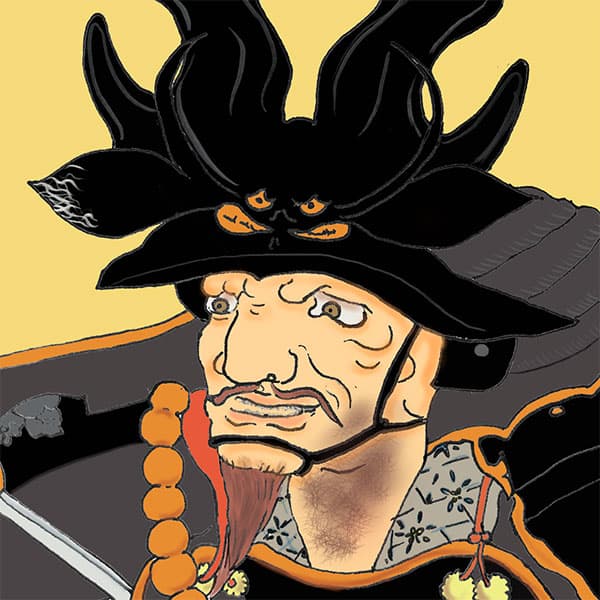
Tadakatsu Honda
- Article category
- biography
- name
- Honda Tadakatsu (1548-1610)
- place of birth
- Aichi prefecture
- Related castles

Kuwana Castle

Otaki Castle
- related incident
Since the Middle Ages, Kuwana has been under the Rakuichi system (a market that allows free trade by relaxing regulations), and has prospered as a port and trade center, earning it the nickname "Juraku no Tsu."
According to the notes of the renga master Munenaga around 1515, ``The size of the port is 5 or 6 towns (approximately 500m to 700m).There are several thousand temples and houses, and several thousand ships moored. It was so developed as a town on the Tokaido Route and as a port town that it is said that the lights reflected in the river look like twinkling stars.
Tadakatsu entered Kuwana in 1601 and immediately began construction of a castle along the Ibi River. The castle also has a dock, and is said to have a four-story, six-story castle tower, 51 turrets, and 46 towers. It is said that when the castle was first constructed, Naomasa Ii, one of the Four Heavenly Kings, mobilized his vassals to support the construction work.
Tadakatsu also developed the castle town as well as the castle. Commerce and industry were brought together, and the development of the castle town was made the most important thing. Particularly preferential treatment is given to foundry workers, tile makers, and potters. Not only were they given housing and tax exemptions, but they were also given protective privileges such as being allowed to carry their surnames and swords.
When the towns were divided, merchants and merchants gathered together their fellow traders and the towns of Aburamachi, Konyamachi, Kajimachi, Nabeyamachi, Uomachi, Funamamachi, Furomachi, and Denmamachi were born, and the names of these towns have continued to this day. Masu.
Kuwana has developed into a town like this.
Throughout the Edo period, it flourished as the 42nd post town on the Tokaido route. Research from the late Edo period revealed that there were two honjin (lodging houses for feudal lords and hatamoto), four wakihonjin (used when many daimyos and hatamoto stayed, or when the honjin alone was not enough), and a hatagoya. With 120 restaurants, it is the second largest in Tokaido.
There is a scene in ``Tokaido Chuuhizakurige'' written by Ikku Jukkasha where Yaji and Kita eat grilled clams. This is a scene where Kuwana is thriving as a post town.
In addition, the ``Kuwana Shichiri Toguchi'' in Utagawa Hiroshige (Ando Hiroshige)'s ukiyo-e ``The Fifty-Three Stations of the Tokaido'' includes the Shichiri Ferry connecting Kuwana and the neighboring post town Miyajuku, as well as the Banryu, a turret facing the river. A turret (Banryu Yagura) is depicted.
Banryu Yagura is a turret that was built facing the river mouth and is a symbol of Kuwana, and was once a must-see for people traveling along the Tokaido. We can also see the scenery of Kuwana.
It was also Tadakatsu who laid the foundation for Kuwana, which developed as a commercial city throughout the Edo period.
Now, in 1609, Tadakatsu retired and his eldest son, Honda Tadamasa, became the second lord of the domain.
In the Osaka Campaign, Tadamasa participated as the vanguard of the Tokugawa side. Also, after the Battle of Osaka, Senhime, Ieyasu's granddaughter and Toyotomi Hideyori's legal wife, and Honda Tadatoki, Tadamasa's eldest son, got married. For this reason, on July 14, 1617, Tadamasa was transferred to the Harima-Himeji domain with an additional 150,000 koku in order to suppress the western provinces, and Tadatoki received 100,000 koku (Himeji new Tadatoki's younger brother Tadatomo Honda was given 50,000 koku each and transferred to Harima, and the Honda family left Kuwana.
Place related to Honda Tadakatsu
Honda Tadakatsu, whose name was well-known throughout the Sengoku period, has connections all over Japan.
- Okazaki City, Aichi Prefecture
- There is a bronze statue of Tadakatsu Honda in Okazaki Park in Okazaki City, Aichi Prefecture, his birthplace. Visitors are greeted by a sitting figure holding a dragonfly cutter.
Ryūjo Shrine, located in the main enclosure of Okazaki Castle within the park, is a shrine that enshrines not only Tokugawa Ieyasu but also Honda Tadakatsu. - Otaki Town, Isumi District, Chiba Prefecture
- The former territory of Otaki, which was given to Tadakatsu by Tokugawa Ieyasu when he transferred his fief to the Kanto region, also has a place connected to Honda Tadakatsu. Ryogenji Temple (Otaki Town, Chiba Prefecture) was founded by Tadakatsu of Otaki Town. In later years, it is said that Tadakatsu's bones were split into parts at this temple.
Gyotoku Bridge, which hangs near Ryogen-ji Temple, has two statues of Tadakatsu, one standing and one seated, on the railings at both ends.
In addition, at the Otaki Castle Festival held every September, a procession of warriors dressed as Honda Tadakatsu and his party and a mikoshi (portable shrine) parade take to the streets. - Kuwana City, Mie Prefecture
- A bronze statue of Honda Tadakatsu stands at the entrance to Kyuka Park on the Kuwana Castle ruins, where he was the last to rule.
Tadakatsu's grave is located at Jodoji Temple, which is close to Kyuka Park. In addition to the grave, Jodo-ji Temple also has a large stone pillar of ``Honda Heihachiro Tadakatsu's main mausoleum.''
There are places and events related to Honda Tadakatsu all over Japan. Why not visit and reminisce about Honda Tadakatsu of days gone by?
Reread Honda Tadakatsu's article
- related incident

- WriterTomoyo Hazuki(Writer)I have loved history and geography since my student days, and have enjoyed visiting historical sites, temples and shrines, and researching ancient documents. He is especially strong in medieval Japanese history and European history in world history, and has read a wide range of things, including primary sources and historical entertainment novels. There are so many favorite military commanders and castles that I can't name them, but I especially like Hisashi Matsunaga and Mitsuhide Akechi, and when it comes to castles, I like Hikone Castle and Fushimi Castle. Once you start talking about the lives of warlords and the history of castles, there's a side of you that can't stop talking about them.



